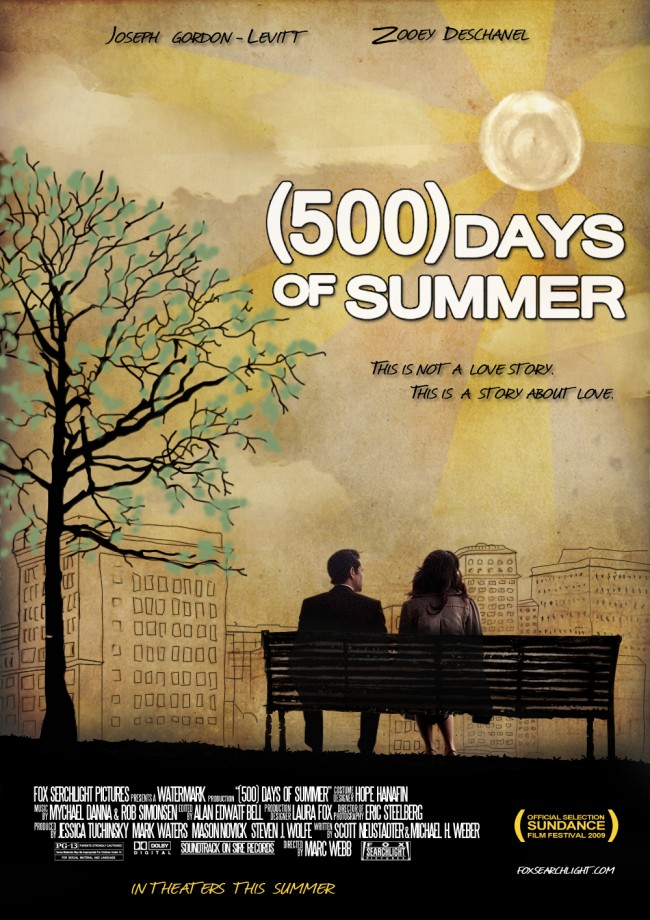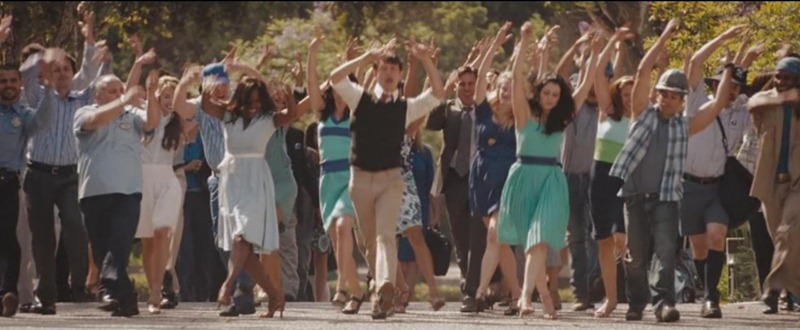This is a pretty straight one. Post-coital bliss is a trope of human nature that has been mined for laughs by just about every entertainment property ever (I don’t remember Citizen Kane terribly well, but it was probably in that, too). It’s so common, in fact, that I can’t stand it anymore unless something completely unpredictable manages to sneak in, but usually it’s just a case of “look, this person is unflappable now, and all it took was some overdue sex, WINK!”. So I’m almost hesitant to single out this scene in 500 Days of Summer because it doesn’t tell us anything we don’t already know about the upswing in mood that occurs when a guy finally goes all the way with a girl he likes. It’s a simple case of over-the-top expressionism, tidily self-contained within these two minutes of running time, just a fun exercise, a probably unnecessary cutaway scene except that it does a lot of the heavy lifting toward balancing the euphoria of titular relationship with the onslaught of melancholy and distress that will hereafter gradually pervade the rest of the film. Also it highlights Tom’s immaturity as he rushes heedlessly into this relationship, but at this stage in the film (32 minutes in), we’ve already received more than the necessary dosage of foreshadowing, so I prefer to isolate this scene as another filmmaker’s interpretation of an Aristocrats-like joke passed down from movie to movie, show to show.
The secret weapon: this is the funniest, happiest done-got-laid joke ever used in a movie. The gag should’ve been retired after this movie came out. There is no room for improvement. Well, maybe it would’ve been even better if it had gone on longer – the sidewalk dance routine is unfairly brief – but brevity being the soul of wit, you gotta hand it to director Marc Webb and his editor for pacing the scene so compactly, offering a new sight gag and inventive twist every few seconds without over-indulging even the best ones (like the aforementioned choreographed dance). As movies like The Aristocrats show (not the best example, but the most on-the-nose), it doesn’t matter so much what joke you’re telling so much as how you’re telling it. Better yet is Ebert’s famous quote that a movie isn’t about what it’s about – it’s about how it’s about it. A sage tongue-twister. In this case Webb turns an ages-old routine into one of the best movie scenes of 2010, and the first moment I always remember when this movie comes to mind. Some may argue for the duel-timeline scene at the party instead, and that was undoubtedly some clever storytelling, but for wholesale visceral impact, watching Joseph Gordon-Levitt walking on sunshine makes a richer impression.
Though happiness is the goal of most film protagonists, it’s not often enough that a movie devotes the time to reveling in its acquisition. In dramas they rarely achieve it, and in comedies, even romantic comedies, once they inevitably do, the movie ends abruptly. In fact, the rest of this movie, perky though it is for a while, becomes excruciating by comparison, with scene after scene of Tom failing to realize that the girl who’s “made his dreams come true” isn’t going to love him the way he prematurely idealized her. 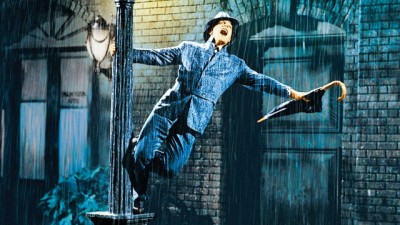 In fact, even this very scene concludes by transitioning via flash-forward to a miserable glimpse of Tom after Summer has broken up with him. Happiness doesn’t last: thanks for reminding us, movie. So making that captured bliss count is a rare commodity in movies, all the more reason to cherish Tom’s stroll in the park. It directly recalls one of cinema’s all-time magical sequences, the titular splish splash from Singin’ in the Rain, in which Gene Kelly rejoices over his blooming romance with Debbie Reynolds by turning the world into a stage. There’s no mention of the Stanley Donen film in the 500 Days of Summer commentary track or press releases, but it’s hard to believe Webb wasn’t at least subconsciously trying to invoke its euphoria, updated to the 21st century lifestyle (sex being the agent, ’80s nostalgia setting the mood).
In fact, even this very scene concludes by transitioning via flash-forward to a miserable glimpse of Tom after Summer has broken up with him. Happiness doesn’t last: thanks for reminding us, movie. So making that captured bliss count is a rare commodity in movies, all the more reason to cherish Tom’s stroll in the park. It directly recalls one of cinema’s all-time magical sequences, the titular splish splash from Singin’ in the Rain, in which Gene Kelly rejoices over his blooming romance with Debbie Reynolds by turning the world into a stage. There’s no mention of the Stanley Donen film in the 500 Days of Summer commentary track or press releases, but it’s hard to believe Webb wasn’t at least subconsciously trying to invoke its euphoria, updated to the 21st century lifestyle (sex being the agent, ’80s nostalgia setting the mood).
The scene was shot in downtown L.A., as a way of showing off the city’s overlooked beauty, and either they waited until the prettiest day of the year or cinematographer Eric Steelberg seriously earned his paycheck, because it looks like downtown heaven, not the L.A. choked with smog, crowding, homeless people, and garbage (sorry L.A., I still love you). The verdant foliage, the bathing glow of sunshine, the wafting mist from the fountain…and that’s just the background detail. I haven’t checked the accuracy on this yet, but Webb explains that just about everyone around Tom wears blue because it reminds him of Summer’s eyes; apparently no other scene in which she is absent during the rest of the movie uses the color at all (or intentionally downplays it). The elation manifests in more evident areas, like the friendly strangers down the street all saying hello, shaking his hand, congratulating him, and subtly getting bouncier in their movements in the build-up to Tom’s big dance, the well-timed fountain salute (notice that Tom is the only one walking astride its ledge in that long shot, rather than on the sidewalk), the UCLA marching band cameo (a subtle nod to JGL’s other fresh, inventive rom-com, 1999’s 10 Things I Hate About You, when Heath Ledger gets the high school band to help him serenade Julia Stiles?), taking time out to hit an imaginary home-run (using baseball for the universal sign of triumph feels just as adorably nostalgic as having Hall & Oates in there), even a winking cartoon bird just for overkill, but the wryest touch of all has to be Tom seeing Han Solo in his own reflection. Humor may be subjective, not 100% universal, but you never see movie characters imagining themselves as other movie characters, so the surprise of that cut to Han in the car window is guaranteed to get a laugh out of anybody (in the original script it was supposed to be Paul Newman, just as magnetic an idol but not as recognizable to the general public circa 2009). As a side note, I wonder if they outfitted Tom in a brown sweater with white sleeves in order to match Han’s identical look in Star Wars. If that was intentional, then high props for attention to detail.
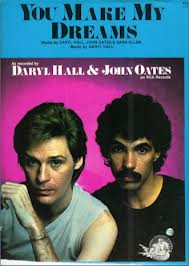 Cueing up Hall & Oates to set the scene in motion was a canny move – ’80s pop music puts pep in your step like no other era, assuming you were born either during or just prior to that decade, of course (which the characters in the movie were). As an ’80s child myself, songs like this seem borne of a simple, relatable, working-class need to cut loose and add a smile to your day.
Cueing up Hall & Oates to set the scene in motion was a canny move – ’80s pop music puts pep in your step like no other era, assuming you were born either during or just prior to that decade, of course (which the characters in the movie were). As an ’80s child myself, songs like this seem borne of a simple, relatable, working-class need to cut loose and add a smile to your day.  By comparison, feel-good pop songs of the ’70s seemed to try too hard or felt vaguely depressing, while those of the ’90s couldn’t help but reek of a certain cynicism that was inescapable at the time. In reality, I’m probably way off base in that claim, and it’s not like I haven’t bopped around over and over again on a high of ABBA and The Jackson 5, or Mariah Carey and Sheryl Crow, but to me they all seem a bit more out of reach. Stuff like “You Make My Dreams”, or “Power of Love” or “Come on Eileen”, those are my jams when I need a pick-me-up. Anyway, I appreciate the care in selecting this particular Hall & Oates ditty over the rest of their ouevre, which for inexplicable reasons feels like having cat crap shoveled into my ears. I mean, “Maneater”? Ugh. “You Make My Dreams” is the touchdown of their singles. Maybe because Duck Tales stole its hook, I don’t know. Also in selecting this song over the more immediate instinct to soundtrack a big happy moment using you-know-what hits by Katrina and the Waves or Wham! Granted, “You Make My Dreams” had already shown up for The Wedding Singer, Step Brothers, Dumb and Dumberer, episodes of King of the Hill, the rebooted Cupid series, The Office, and an SNL Weekend Update sketch, but in a police line-up of over-used ’80s songs, it wouldn’t be fingered quite so readily as other suspects, so it was still a viable option.
By comparison, feel-good pop songs of the ’70s seemed to try too hard or felt vaguely depressing, while those of the ’90s couldn’t help but reek of a certain cynicism that was inescapable at the time. In reality, I’m probably way off base in that claim, and it’s not like I haven’t bopped around over and over again on a high of ABBA and The Jackson 5, or Mariah Carey and Sheryl Crow, but to me they all seem a bit more out of reach. Stuff like “You Make My Dreams”, or “Power of Love” or “Come on Eileen”, those are my jams when I need a pick-me-up. Anyway, I appreciate the care in selecting this particular Hall & Oates ditty over the rest of their ouevre, which for inexplicable reasons feels like having cat crap shoveled into my ears. I mean, “Maneater”? Ugh. “You Make My Dreams” is the touchdown of their singles. Maybe because Duck Tales stole its hook, I don’t know. Also in selecting this song over the more immediate instinct to soundtrack a big happy moment using you-know-what hits by Katrina and the Waves or Wham! Granted, “You Make My Dreams” had already shown up for The Wedding Singer, Step Brothers, Dumb and Dumberer, episodes of King of the Hill, the rebooted Cupid series, The Office, and an SNL Weekend Update sketch, but in a police line-up of over-used ’80s songs, it wouldn’t be fingered quite so readily as other suspects, so it was still a viable option.
 But really, the masterstroke to the movie scene is Joseph Gordon-Levitt, a man whose praises I never tire of singing. Ever since the late ’90s, when he made his way into some of the teen films I was crazy about at the time (10 Things, Halloween: H20; I didn’t watch 3rd Rock from the Sun often enough to notice his work in it), I’ve kept my eye on him, and unlike other then-candidates for stardom/hero worship (Jennifer Love Hewitt, where are ye? I don’t actually want to know), his career paid off, first in a series of complex, powerhouse turns in grim indie work – Mysterious Skin, Brick, The Lookout, then in the post-500 Days years, an array of parts ranging from colorful villainy in G.I. Joe (so disappointing, albeit very smart, that he didn’t do the sequel) and a suave utility player in Christopher Nolan movies to confident leading man status in 50/50 and Premium Rush to scene-stealing mayhem as Hesher. The man needn’t be typecast, for he has the dexterity to dance through any challenge. What ultimately endears me most to him is his musical sensibility, though. Our first and thus far tastiest glimpse of it was in this movie’s terrific song-and-dance number. Look at the way he throws himself into those full-body gyrations. Even the upper torso shimmy he starts with writhes with sincerity, but once he strikes the pose, there’s no mistaking how much fun he’s having. Sometimes you can tell when an actor is uncomfortable trying to dance on camera, choreographed or not. They just can’t commit because of their insecurities or disinterest, and it shows. JGL moves like it’s the career high he’s been waiting for since Angels in the Outfield. His lanky frame and natural agility lend him the nimble grace of Fred Astaire, while his genuine enthusiasm for cutting a rug calls to mind Gene Kelly’s breathless zeal.
But really, the masterstroke to the movie scene is Joseph Gordon-Levitt, a man whose praises I never tire of singing. Ever since the late ’90s, when he made his way into some of the teen films I was crazy about at the time (10 Things, Halloween: H20; I didn’t watch 3rd Rock from the Sun often enough to notice his work in it), I’ve kept my eye on him, and unlike other then-candidates for stardom/hero worship (Jennifer Love Hewitt, where are ye? I don’t actually want to know), his career paid off, first in a series of complex, powerhouse turns in grim indie work – Mysterious Skin, Brick, The Lookout, then in the post-500 Days years, an array of parts ranging from colorful villainy in G.I. Joe (so disappointing, albeit very smart, that he didn’t do the sequel) and a suave utility player in Christopher Nolan movies to confident leading man status in 50/50 and Premium Rush to scene-stealing mayhem as Hesher. The man needn’t be typecast, for he has the dexterity to dance through any challenge. What ultimately endears me most to him is his musical sensibility, though. Our first and thus far tastiest glimpse of it was in this movie’s terrific song-and-dance number. Look at the way he throws himself into those full-body gyrations. Even the upper torso shimmy he starts with writhes with sincerity, but once he strikes the pose, there’s no mistaking how much fun he’s having. Sometimes you can tell when an actor is uncomfortable trying to dance on camera, choreographed or not. They just can’t commit because of their insecurities or disinterest, and it shows. JGL moves like it’s the career high he’s been waiting for since Angels in the Outfield. His lanky frame and natural agility lend him the nimble grace of Fred Astaire, while his genuine enthusiasm for cutting a rug calls to mind Gene Kelly’s breathless zeal. 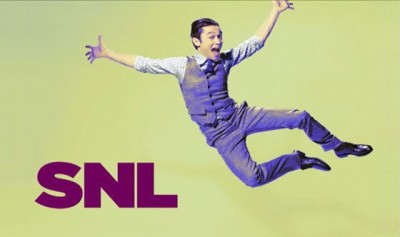 He probably could’ve been a Broadway star and beloved cultural emcee like Neil Patrick Harris if he’d taken a couple different turns; if his underlying preference for that career path weren’t already evident in this clip, or his back-up dancing in a Seth MacFarlane song at this year’s Oscars, or his Magic Mike striptease on last year’s SNL hosting gig, or the She & Him music video made in conjunction with 500 Days of Summer (also directed by Marc Webb and featuring Zooey Deschanel, where he makes a convincing case to be the star of every musical made from now on, forever), or the fact that he founded the Internet music production company hitRECord (for which he often stages, personally films and even performs in public dance auditions), then maybe you’ll be swayed by his version of Donald O’Connor’s “Make ‘Em Laugh” number from Singin’ in the Rain itself, also on SNL (where, amazingly, he performs both of O’Connor’s running-up-the-side-of-a-wall-and-doing-a-back-flip moves – c’mon, what other actor do you know who can pull that off?). This is the old-school multi-talent of a brilliant entertainer (inevitably, he’s already written and directed his own movie, Don Jon, coming out in October). I only hope he follows the rhythm in his heart and takes on more music-related projects for his film career. Moves and passion like his shouldn’t be ignored.
He probably could’ve been a Broadway star and beloved cultural emcee like Neil Patrick Harris if he’d taken a couple different turns; if his underlying preference for that career path weren’t already evident in this clip, or his back-up dancing in a Seth MacFarlane song at this year’s Oscars, or his Magic Mike striptease on last year’s SNL hosting gig, or the She & Him music video made in conjunction with 500 Days of Summer (also directed by Marc Webb and featuring Zooey Deschanel, where he makes a convincing case to be the star of every musical made from now on, forever), or the fact that he founded the Internet music production company hitRECord (for which he often stages, personally films and even performs in public dance auditions), then maybe you’ll be swayed by his version of Donald O’Connor’s “Make ‘Em Laugh” number from Singin’ in the Rain itself, also on SNL (where, amazingly, he performs both of O’Connor’s running-up-the-side-of-a-wall-and-doing-a-back-flip moves – c’mon, what other actor do you know who can pull that off?). This is the old-school multi-talent of a brilliant entertainer (inevitably, he’s already written and directed his own movie, Don Jon, coming out in October). I only hope he follows the rhythm in his heart and takes on more music-related projects for his film career. Moves and passion like his shouldn’t be ignored.
The same might also be said of director Marc Webb, who helmed mainstream music videos (from Santana to Maroon 5 to Green Day) for over ten years before making this his feature debut. He must have curated the tasteful and broad-minded soundtrack to this movie, including as it does Regina Spektor (another former video client of his) in the opening credits, The Smiths as a recurring motif, Feist, Simon & Garfunkel, Black Lips, Wolfmother, The Temper Trap, Doves, Joseph Gordon-Levitt doing karaoke to The Pixies, Zooey Deschanel doing Nancy Sinatra, an obligatory She & Him song, and a funny reference to Patrick Swayze’s “She’s Like the Wind” (it’s the song Tom says he hears every time he thinks about Summer in the early stages of his crush). Music is key to 500 Days of Summer and seems to be a real hobby of Webb’s, not just a job, but now he’s busy for the next decade doing all the Amazing Spider-Man sequels, so I gotta wonder if 500 Days was the last gasp of that pursuit. It would seem a shame. If nothing else, he might fill his future blockbusters with better songs than former Spider-Man soundtrack staples Nickelback, Train, Dashboard Confessional, and The Killers (older deep cuts by The Shins, Amy Ray, Phantom Planet, and Coldplay were a step in the right direction for his first Spider-Man reboot). But even if he does end up taking the low road, squeezing generic hero ballads out of, say, Ke$ha and Justin Bieber, nothing will take away this Best Morning After scene. In a film front loaded with qualities pre-destined to stand out from its crowded genre, amidst all the savvy observations on couplehood, the snappy cast, the ornate storybook narration, the uncommon themes of relationships built on mismatched needs and unrequited obsession, the ambitious stand-alone moments (like the split-screen party), the puzzle-box plot structure, and a pretty good pun of a movie title, it’s a prosaic joke told by a 30-year-old New Wave jingle that advances 500 Days of Summer to the big leagues of romantic classics.
More fun facts: the scene was supposed to include other over-the-top details:
- a ninja battle
- Daryl Hall and John Oates themselves
- Ronald McDonald and Mayor McCheese
- the pavement lighting up in sync to Tom’s steps, a la the “Billie Jean” video


